
In today’s digital world, subscription based business models have become a cornerstone across various industries, including technology, entertainment, food delivery, and ecommerce. This approach allows companies to offer continuous value to customers while ensuring a steady revenue stream.
This guide delves into subscription models, highlighting their benefits and providing real-world examples to illustrate their effectiveness.
What is a Subscription Based Business Model?
This model involves customers paying a recurring fee to access a product or service, typically monthly, quarterly, or annually. Instead of making a one-time purchase, customers subscribe to receive ongoing access to the offering. This model is commonly used by digital platforms, content providers, SaaS companies, and even physical goods providers like subscription boxes.
Ready to start your own subscription journey?
Let’s look for the most popular types of subscription based ecommerce models that drive success across industries.
Top Benefits of the Subscription Business Model
Many businesses prefer subscription models over one-time sales because they offer several key advantages:
Predictable and Consistent Revenue
A model offers a steady and predictable income stream, a significant advantage over traditional one-time sales models. This consistency allows businesses to plan their finances more effectively, set realistic goals, and invest confidently in marketing, product development, or hiring.
By analyzing customer acquisition and retention data over time, companies can forecast their monthly or annual revenue more accurately, leading to improved cash flow management and long-term stability.
Long-Term Customer Relationships
Subscriptions shift the focus from one-time transactions to ongoing engagement. This model encourages businesses to prioritize customer satisfaction because every month is a new opportunity to deliver value.
When customers stay subscribed, it often means:
- They trust your brand.
- They feel satisfied with your service or product.
- They are likely to recommend you to others.
Increased Customer Lifetime Value (CLV)
A subscription model boosts Customer Lifetime Value by turning one‑off buyers into long‑term subscribers. Because they pay regularly, subscribers often spend more over time than they would on occasional purchases.
When customers stay subscribed, it usually means they:
- Trust your brand and feel confident in what you offer.
- Enjoy the ongoing value and convenience you provide.
- Are open to upgrading to premium plans or adding extras.
Reduced Customer Acquisition Costs Over Time
Getting a new customer can be expensive, with ads, promotions, discounts, etc. But once someone subscribes, you no longer have to spend heavily to win them back every time.
With high retention rates, subscription models become more cost-effective in the long run. You can allocate more of your budget toward improving products or growing your brand rather than constantly hunting for new buyers.
Scalability Without Proportional Costs
With subscription models, adding more users usually doesn’t cost much extra. For digital products, like software, streaming services, or online memberships, serving each additional subscriber is almost free once your platform is built.
Even for physical subscriptions, you gain economies of scale:
- Buying in bulk cuts your product costs.
- Packing and fulfillment become more efficient.
- Shipping routes can be optimized to save time and money.
Valuable Customer Insights Through Data
Every interaction with your subscribers, whether they are logging in, making choices, or giving feedback, creates data you can learn from. By analyzing this information, you can:
- Discover which features or products your audience values most.
- Track usage patterns to see what’s used regularly and what’s ignored.
- Pinpoint areas for improvement or innovation based on real customer behavior.
Opportunity to Build a Community
A subscription is more than just a payment plan; it is a connection. Many successful subscription brands go beyond products and services to create communities around their offerings.
Examples:
- Fitness apps offering group classes and social features.
- Learning platforms with member forums and events.
- Niche boxes that connect like-minded enthusiasts.
How to Start a Subscription Based Business
Here is a step-by-step guide to help you scale your own subscription venture.
Step 1: Identify Your Niche
Every successful subscription business starts with a clear, in-demand niche. Focus on a target market with a recurring need, passion, or problem that your product or service can solve consistently. Conduct market research to:
- Understand customer behavior and preferences.
- Discover gaps in existing offerings.
- Analyze competitors.
- Identify trends and seasonal demands.
Step 2: Choose Your Subscription Model
You may have noticed that not all subscription models are created equal. Choose the one that aligns best with your business goals, audience expectations, and operational capabilities. Popular models include:
- Product-based subscriptions (e.g., monthly boxes, replenishment services)
- Service subscriptions (e.g., access to premium support or community)
- Membership models (e.g., educational content, exclusive offers)
- Hybrid models (a mix of one-time purchases and subscriptions)
Step 3: Create a Strong Value Proposition
Your value proposition should always be clear, compelling, and customer-centric. There is a need to highlight what makes your subscription irresistible, such as:
- Cost savings over time
- Exclusive access to content or products
- Personalized experiences
- Time-saving convenience
- Surprise and delight (especially in curated boxes)
Step 4: Develop Your Offer
Design your subscription package to meet customer needs and business goals. This includes:
- What’s included in the subscription (products, services, bonuses, etc)
- Pricing tiers to accommodate different budgets and increase upsell potential
- Billing frequency (monthly, quarterly, annually)
- Cancellation or pause options to reduce churn
Step 5: Build the Right Infrastructure
To run smoothly, your subscription business needs a reliable tech and operational backbone:
- A professional website or app with user-friendly navigation and secure billing
- Subscription management tools (e.g., Recharge, Bold Subscriptions, or WooCommerce Subscriptions)
- CRM systems to manage customer relationships and segment communications
- Fulfillment and logistics systems (for product-based models)
- Integration with payment gateways like Stripe, PayPal, or Square
Step 6: Launch and Market Your Subscription
Once your foundation is ready, start with a soft launch to test pricing, user experience, and product delivery. Collect early feedback to make quick adjustments.
Then, shift into marketing mode:
- Email marketing to build anticipation and nurture leads
- Influencer partnerships to tap into niche audiences
- Social media advertising to drive traffic and conversions
- Referral programs to reward loyal customers for spreading the word
Step 7: Retain Subscribers and Optimize Continuously
Launching is just the beginning—retention is where the magic (and profit) happens.
Use customer data and behavior analytics to:
- Improve your product or content regularly
- Identify drop-off points and reduce churn
- Personalize communication and recommendation
- Reward long-term subscribers with perks or loyalty benefits
- A/B test features, pricing, and campaigns
Key Tools and Platforms for Running a Subscription Business
Here is a breakdown of the key categories and the top platforms in each:
Subscription Platforms
These platforms help you manage your products, customers, and recurring orders seamlessly:
- Shopify + Subscription Apps (e.g., Recharge, Loop Subscriptions): This is ideal for ecommerce brands looking to add subscription functionality to their Shopify stores.
- WooCommerce Subscriptions: This is best for WordPress users. It allows recurring billing, free trials, and subscription options integrated directly into your WooCommerce store.
Payment Gateways
This means reliable and secure payment gateways, which are essential for processing recurring transactions smoothly:
- Stripe: This is used to handle subscriptions. It also supports recurring billing, advanced invoicing, and integration with most ecommerce platforms.
- PayPal: This is a trusted payment method for many customers. It also supports recurring payments and integrates easily with platforms like Shopify and WooCommerce.
Analytics & Retention Tools
These are necessary to monitor subscription metrics like churn rate, Monthly Recurring Revenue, and customer lifetime value to help you grow and retain your subscriber base:
- Baremetrics: This could provide real-time insights into key subscription metrics and customer behavior. It integrates directly with Stripe and helps track churn, upgrades, downgrades, and more.
- ProfitWell: It is a free tool for subscription analytics that tracks revenue, churn, and engagement. It also offers features for improving retention through pricing optimization and customer segmentation.
- Churn Buster: This tool helps reduce involuntary churn caused by failed payments. It automates retry logic and notifies customers to update their payment details before their subscription lapses.
Marketing & Communication Tools
This kind of tool focuses on keeping subscribers engaged and attracting new ones, which requires a strong marketing stack:
- Klaviyo: This is a powerful email marketing tool for ecommerce. It has robust automation, segmentation, and personalization features, it helps you drive repeat purchases and reduce churn.
- HubSpot: This is a detailed CRM and marketing automation platform that is perfect for managing leads, nurturing relationships, and running email campaigns.
- Buffer or Hootsuite: These social media management tools help you schedule content, engage with your audience, and track performance across multiple platforms, all in one place.
Subscription Business Model Examples Across Industries
Here is a look at subscription based business model examples:
Streaming Services: Netflix
Streaming services allow users to access a vast library of content, such as movies, TV shows, music, and podcasts, without downloading files. These services offer on-demand entertainment, enabling users to enjoy content anytime and anywhere, provided they have an internet connection.
Netflix: A leading video streaming service offering a wide range of movies, TV series, documentaries, and original content across various genres.
Home Maintenance: Latitude Home Maintenance
Home maintenance subscriptions offer homeowners a convenient way to manage routine upkeep tasks through regular, scheduled services. These subscriptions typically include services like HVAC inspections, gutter cleaning, appliance maintenance, and minor repairs, helping to prevent costly issues and maintain the home’s value.
Latitude Home Maintenance provides a monthly subscription service where a dedicated handyman visits your home to perform tasks from your personalized to-do list. This concierge approach allows homeowners to address specific maintenance needs regularly, ensuring their home remains in optimal condition.
Subscription Boxes: The “Surprise and Delight” Model
Subscription boxes are a popular business model where customers receive curated packages of products regularly, such as monthly or quarterly.
These boxes are tailored to specific interests or themes, offering a personalized experience that introduces customers to new products they might not discover otherwise.
- Each box is thoughtfully assembled around a particular theme or customer preference, such as beauty, snacks, pet toys, or home goods.
- Subscribers enjoy the ease of receiving products delivered directly to their doorstep, eliminating the need to shop for these items individually.
- The model provides an element of surprise, allowing customers to explore new products and brands regularly.
SaaS Subscription: HubSpot
This model is ideal for businesses that need flexible, up-to-date solutions without the hassle of managing infrastructure.
HubSpot’s Commerce Hub is a suite of tools integrated into their CRM platform, designed to streamline businesses’ sales and payment processes. It allows users to:
- Create and manage subscription plans.
- Send recurring invoices and automate payment reminders.
- Track monthly recurring revenue and customer interactions.
Health & Wellness Subscription: Yoga International
A health and wellness subscription allows you to skip the gym commute and get access to expert-led classes, coaching, and tools for one monthly fee.
Yoga International is an online yoga studio offering over 4,000 on‑demand yoga, meditation, and breathwork sessions. You can:
- Stream or download classes to practice anytime, anywhere
- Filter by style (Vinyasa, Hatha, Yin), level, instructor, or duration
- Access tutorials, guided meditations, and breathwork exercises
- Enjoy new classes and challenges delivered to your inbox
The future of subscription based ecommerce is set for significant growth, driven by consumers’ increasing desire for convenience and personalized experiences. Key trends to watch include:
Wrap Up
Having explained and learned from successful examples and selecting the right platforms, you can position yourself for success, whether you offer monthly boxes, digital memberships, or software services.
When expanded, this model offers a smart way to grow your business and extend customer relationships. Now is a good time to get started here.
FAQs
1. Why are subscription models becoming popular?
They offer a steady income for businesses and convenience for customers, leading to loyalty and better demand forecasting.
2. What pricing strategies are common in subscription models?
Common subscription pricing strategies include flat-rate, tiered, and usage-based.
3. How do businesses handle cancellations and refunds?
It can be easily handled by having clear policies, easy cancellation, and offering pro-rated refunds to create trust.
4. Can traditional businesses transition to a subscription model?
Yes! Many do it by offering ongoing value, like car companies offering feature subscriptions.
5. How do subscription businesses retain customers?
Subscription businesses retain customers by delivering consistent value, personalizing experiences, providing exceptional customer support, and offering flexible subscription options.


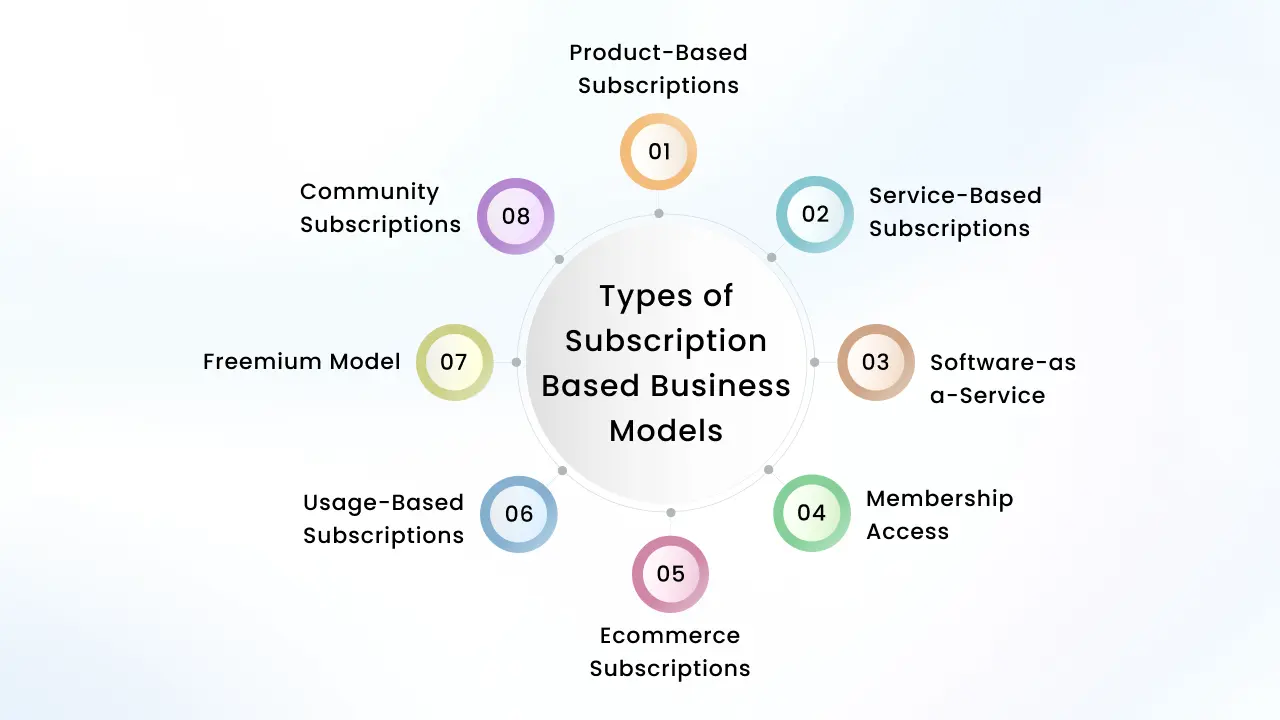
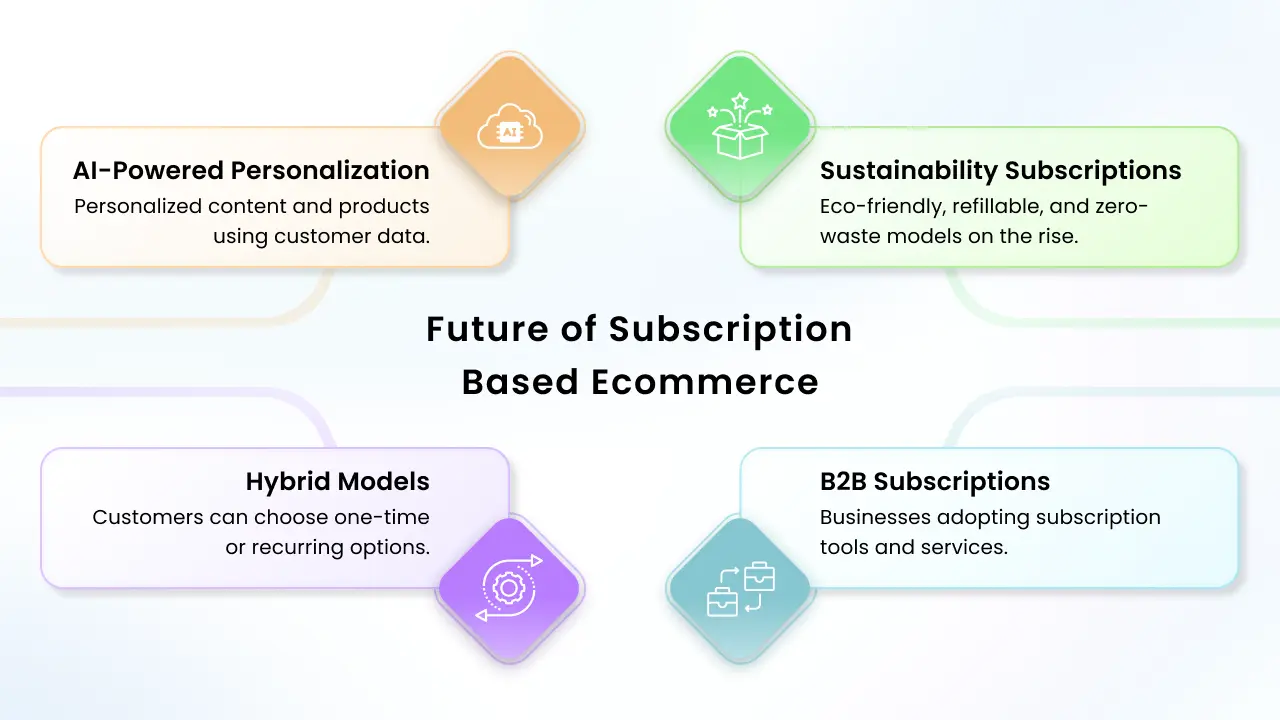

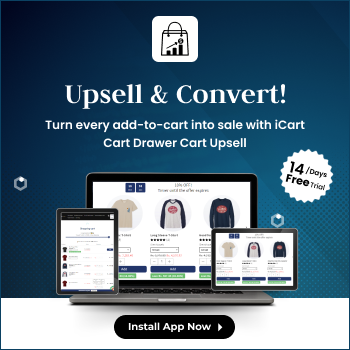

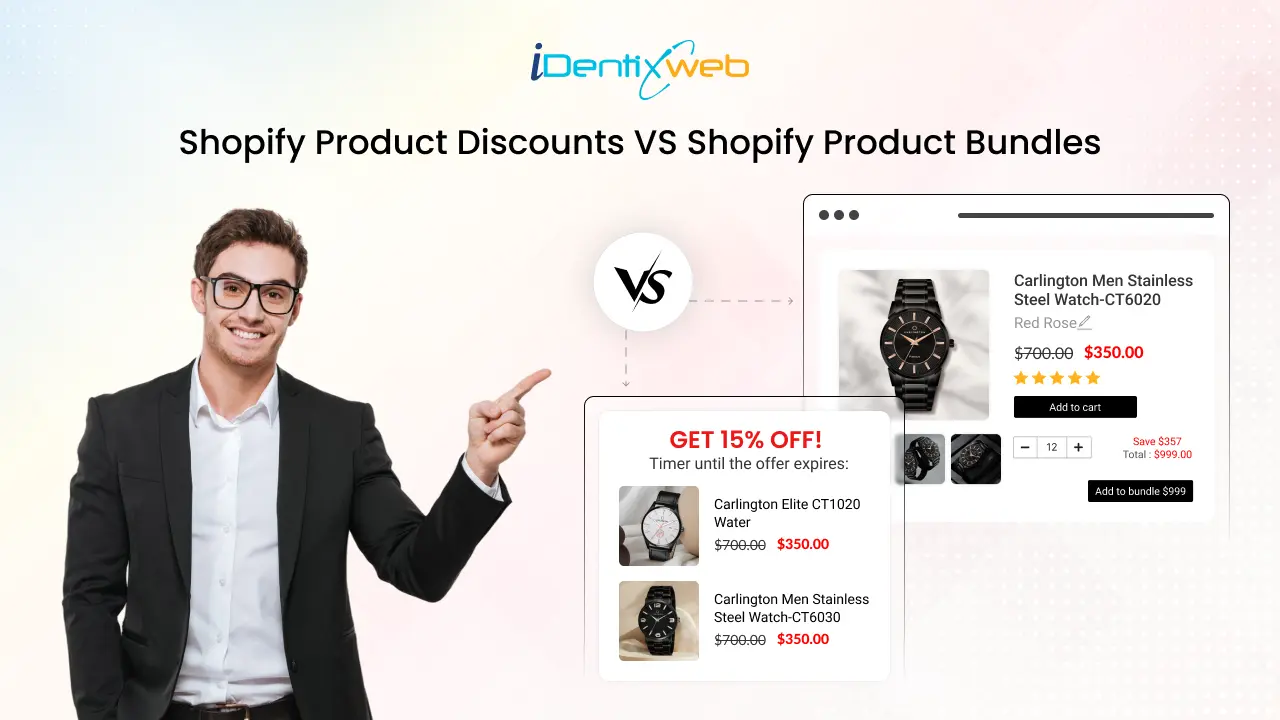

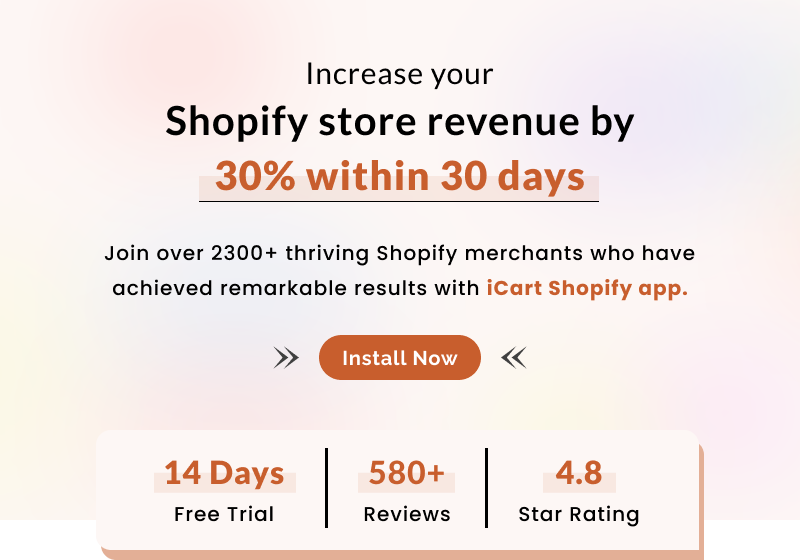
About the author
Bhavesha Ghatode
Explore Content with Bhavesha, a passionate and dedicated technical content writer with a keen understanding of e-commerce trends. She is committed to sharing valuable insights, practical assets, and the latest trends that can help businesses thrive in a competitive environment.